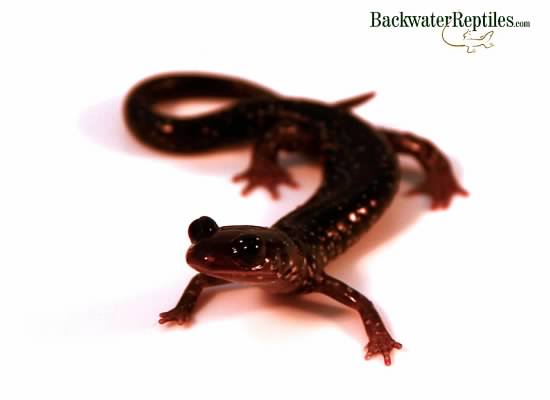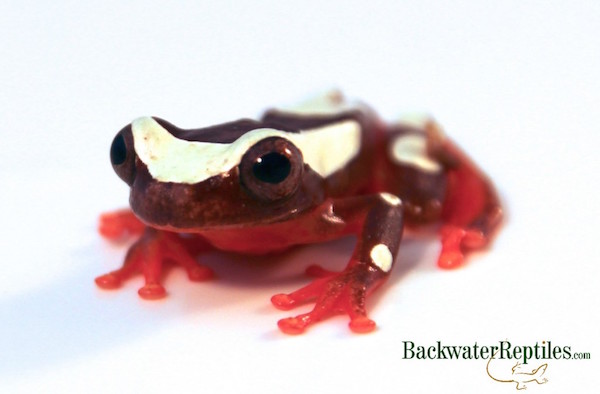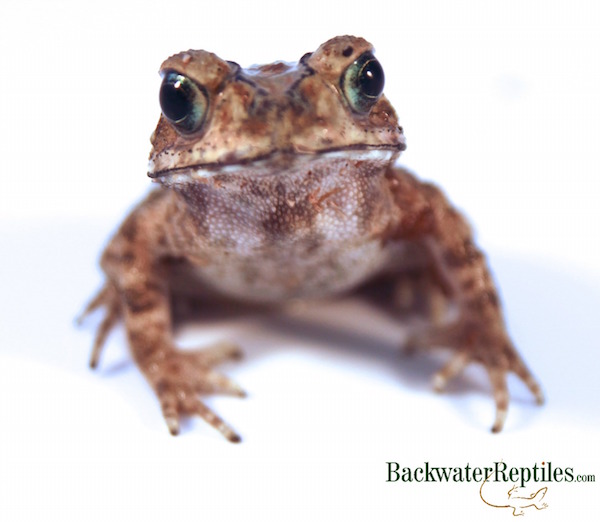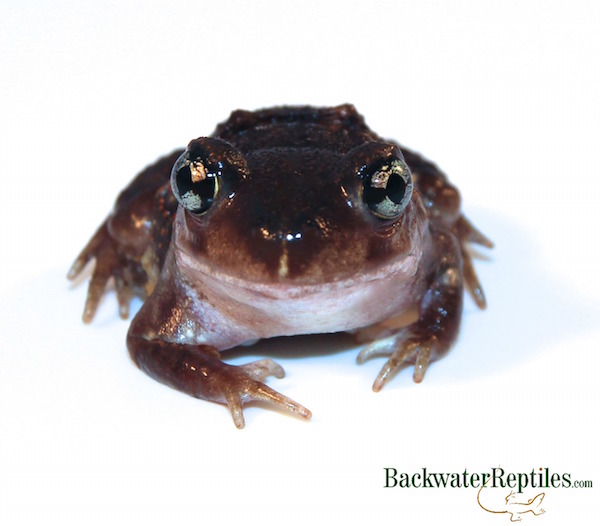Did you know that the Tiger Salamander (Ambystoma tigrinum) is the largest salamander commonly available as a pet?
Even if you did know that little factoid, we’re betting this article, which will detail care tips and tricks for tiger salamanders in FAQ format, will teach you something new. So get ready to learn how to care for your Tiger salamander!
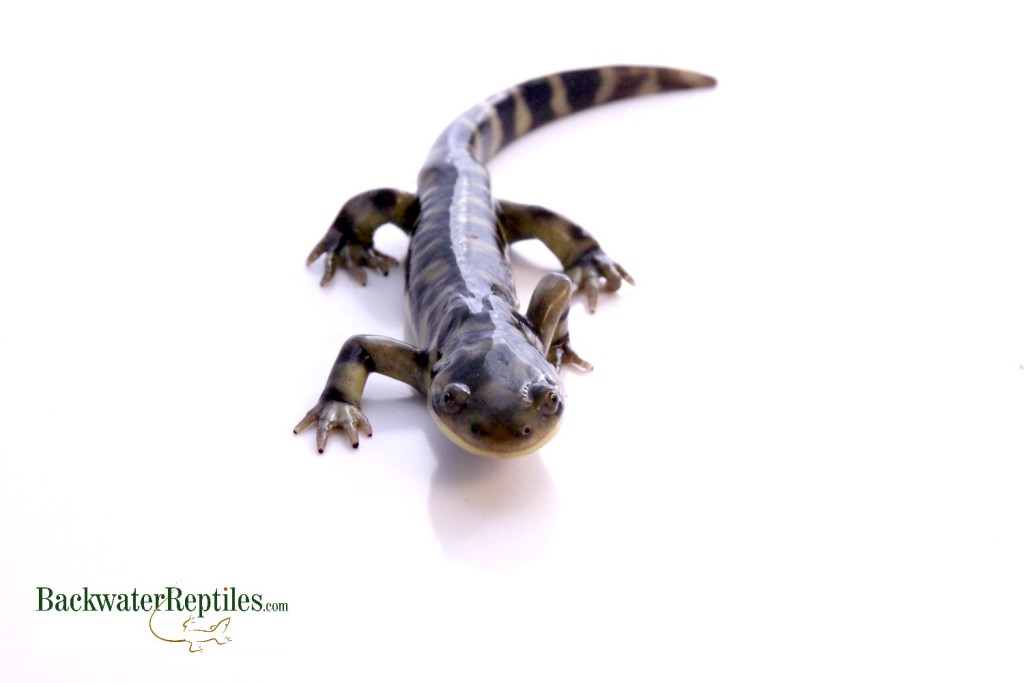
What do tiger salamanders look like?
Tiger salamanders actually come in a large variety of colors with varying patterns. Most will be a dark grey or brown color with darker, nearly black bars or stripes along their backs. Some are lighter in tone, while others are darker. Some might even have spots!
Overall, tiger salamanders are sturdy, stocky amphibians with thick bodies, strong legs, and small eyes. They enjoy burrowing, so their small eyes and strong limbs are great adaptations for this behavior.
How big will my tiger salamander get?
As we’ve already mentioned, tiger salamanders are pretty much the largest land-dwelling salamanders that are commonly available in the pet trade.
Most will average around eleven or twelve inches, but it is not unheard of for a tiger salamander to reach up to fourteen inches long!
Tiger salamanders are not shy when it comes to mealtime, so the more you feed your salamander, the bigger and faster it will grow! We just recommend a low-fat diet (i.e. don’t feed your salamander a ton of fatty insects or pinky mice) so that it doesn’t grow obese.

What do tiger salamanders eat?
As previously mentioned, tiger salamanders are not picky eaters. They enjoy meal time and will pretty much eat whenever food is presented to them.
At Backwater Reptiles, we feed ours a steady diet of crickets, mealworms, reptiworms, roaches and nightcrawlers because tiger salamanders are carnivorous. We do give wax worms and horn worms as treats from time to time.
It’s also not uncommon for mature, large adults to be able to eat frozen/thawed fuzzie or pinkie mice.
Pro Tip: If your tiger salamander is wild-caught (which most pet salamanders are), it will probably spend a lot of time burrowing at first while it gets acclimated to its new home. We have found that tiger salamanders can be taught to emerge from hiding at feeding time if you gently tap the glass of their tank a few times to indicate feeding time. This type of training will involve digging your salamander out the first few times you tap the glass to commence feeding, but tiger salamanders are actually fairly smart and will quickly catch on.
How do I create a habitat for my pet salamander?
Tiger salamanders prefer horizontal space over vertical space (they’re burrowers, not climbers!), so if you are keeping a single salamander, a ten or 20 gallon tank should suffice. The 20 gallon is actually enough space for two salamanders.
You will discover that your tiger salamander enjoys burrowing and hiding, so be sure to provide a substrate that allows for this behavior. We recommend commercial topsoil with no added chemicals or artificial ingredients, although coconut fiber also works well. The substrate should be kept moist, but never to the point of dripping if you pick some up in your hands.
You can also choose to include a few hiding places in your salamander’s enclosure. Make sure you choose light weight objects such as cork or terra cotta and avoid heavy porcelain because otherwise your salamander might burrow underneath and accidentally injure itself.
Your pet tiger salamander will thrive if you keep the temperature in its enclosure anywhere from 50 to 75 degrees Fahrenheit, although we recommend trying to avoid extreme temp fluctuations. Try to keep the ambient temperature relatively stable.
Are tiger salamanders aggressive and can I handle my tiger salamander?
By nature, tiger salamanders are burrowers and hiders. Like most salamanders, they are secretive and tend to avoid people, but tigers actually adapt really well to being handled and kept in captivity.
We’ve never heard of a tiger salamander that was aggressive or of anything other than an accidental bite. But in reality, tiger salamanders don’t have sharp teeth, so if you just happened to be feeding your salamander by hand and it missed its food and grabbed your fingers instead, you more than likely wouldn’t even have broken skin.
Are tiger salamanders good pets for beginners and/or children?
Tiger salamanders adapt very well to captivity, especially when their natural environments are particularly well-replicated. We think this makes them excellent options for young children and we’d go so far as to recommend them as classroom pets.

Tiger salamanders don’t need a lot of maintenance to stay healthy. As long as you maintain a decent temperature, a moist substrate, and you take care not to overfeed or underfeed your salamander, you should have a pet that lives for ten years or longer.
I think I want a pet tiger salamander. Where can I buy one?
Most commercial pet stores keep tiger salamanders on hand. But we always think it is safer to buy from a breeder or supplier who has a record of producing healthy animals.
If you wish to purchase from Backwater Reptiles, we do sell three types of tiger salamander: Eastern, Barred, and aquatic stage animals that still have their gills.
We hope our blog post on Tiger salamander care has helped better inform you on how to keep these wonderful amphibians successfully in captivity. If you have any questions, feel free to leave a comment below.


